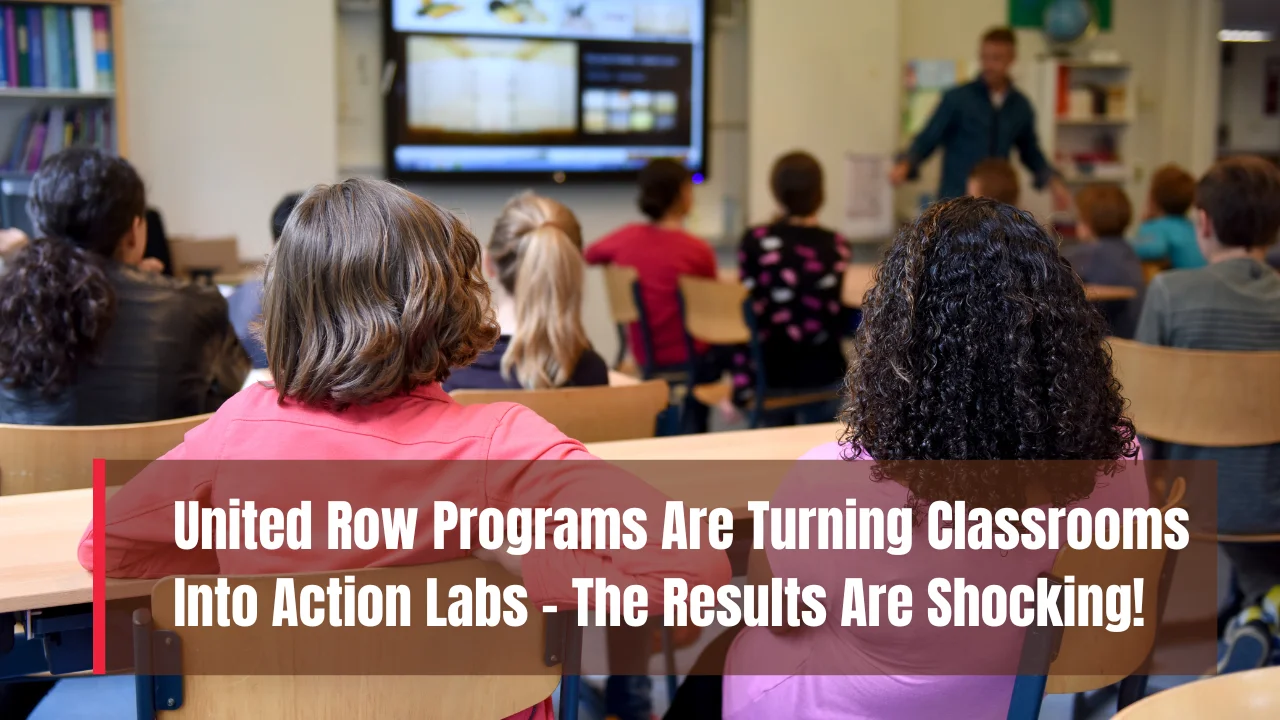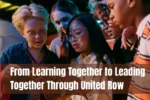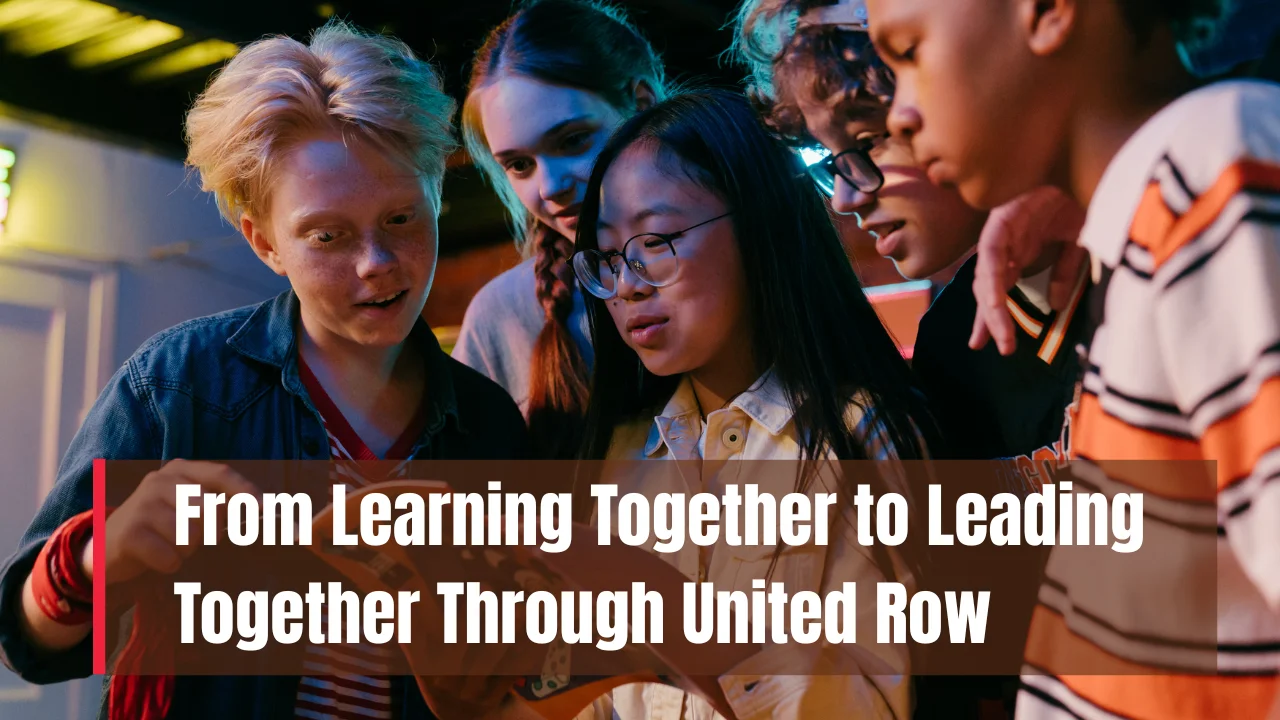United Row Programs: United Row Programs are reshaping the educational landscape by introducing students to a new way of learning — one that’s rooted in action, participation, and purpose. These programs move students beyond the traditional textbook-and-test model and into a more meaningful, immersive experience. As education systems across the globe look for ways to better engage learners, this model offers a fresh and exciting approach.
This article delves into how United Row Programs are encouraging students to learn through doing. It outlines the core features of the programs, the types of activities students engage in, the benefits to both academic and personal development, and why this approach is gaining traction in schools and educational communities. We’ll also explore how these programs are tailored to support essential 21st-century skills while aligning with broader educational goals.
United Row Programs Encouraging Students to Learn Through Action
United Row Programs are built around a single powerful idea: students learn best when they are actively involved. These programs combine hands-on learning, student engagement, and real-world experiences to create a dynamic classroom environment. Rather than memorizing content, students apply knowledge through collaborative projects, experiential learning modules, and problem-solving in education. These approaches not only increase student participation but also help develop teamwork skills and a sense of responsibility. By placing students in the center of the learning process, United Row Programs give them ownership over their education and make learning both relevant and enjoyable.
Overview Table: A Glance at United Row Programs
| Key Component | Description |
| Purpose | To enhance learning through active participation and real-world application |
| Learning Style | Action-based, practical learning through projects and experiences |
| Core Skills Developed | Communication, collaboration, critical thinking, leadership |
| Target Audience | Primary to secondary students across various educational settings |
| Program Activities | Community service, workshops, simulations, student-led initiatives |
| Teacher’s Role | Acts as a facilitator or mentor, not just a lecturer |
| Student Outcomes | Increased engagement, better retention, improved confidence |
| Educational Benefits | Blends academic content with experiential learning for deeper understanding |
What are United Row Programs?
United Row Programs are structured initiatives that bring active learning to life. Rather than having students sit passively in classrooms, these programs immerse them in practical tasks and real-world projects. Whether it’s planning a school garden, participating in a social campaign, or working on a local business idea, students are encouraged to take ownership of their learning.
This model is a departure from passive instruction. The focus is on building practical learning experiences that enhance creativity and foster youth development. Students develop essential life skills, including time management, problem-solving, adaptability, and communication. These programs make learning more relevant and engaging for today’s generation.
Benefits of Learning Through Action
The benefits of United Row Programs are broad and impactful. First and foremost, they greatly enhance student engagement. When learners are actively involved in their lessons, they tend to be more motivated, focused, and excited about school.
These programs also help students retain information longer by connecting knowledge to real-world outcomes. Concepts learned through project-based education are easier to remember because they are tied to experiences, not just notes on a page.
Beyond academics, students gain confidence. Taking charge of a project or presenting to peers builds public speaking and leadership abilities. These experiences develop both emotional intelligence and resilience, helping students become more well-rounded individuals.
How Programs Are Structured
The structure of United Row Programs is carefully designed to balance academic objectives with flexible, student-centered experiences. Instead of a rigid curriculum, these programs use modular designs where learning outcomes are achieved through hands-on learning opportunities.
Typically, programs begin with a challenge or question that students must address through research, teamwork, and action. Teachers act as facilitators who guide, ask questions, and provide resources, allowing students to explore, experiment, and come up with their own solutions.
For instance, a unit in environmental science might involve students investigating local pollution, proposing solutions, and presenting their findings to the community. This structure helps make abstract ideas more tangible and teaches students how to take initiative.
Key Features of United Row Programs
- Real-World Activities: These include field visits, social impact campaigns, local partnerships, and practical simulations that directly relate to students’ surroundings and lives.
- Student-Led Projects: Students take the lead, from planning to execution. They learn how to collaborate, assign roles, track progress, and evaluate outcomes, reinforcing their independence and sense of accountability.
These key features contribute to the long-term development of both academic and life skills.
Why Action-Based Learning Works
Action-based learning is effective because it aligns with how students naturally process and absorb information. Rather than simply listening to a lecture, students in United Row Programs get involved. This physical and mental engagement makes learning more personal and memorable.
This approach is particularly effective for students who may struggle with traditional methods. It accommodates different learning styles — visual, auditory, and kinesthetic — and creates an inclusive learning environment. It also allows for reflection, where students assess what they did, what worked, and what could be improved, helping them grow both intellectually and emotionally.
Popular Activities in United Row Programs
- Community Projects
Students identify challenges in their communities, brainstorm ideas, and work in teams to implement solutions. These projects build empathy, social awareness, and a sense of civic duty. - Creative Workshops
Activities such as design thinking labs, robotics sessions, or multimedia storytelling allow students to experiment with new technologies and tools, encouraging innovation and exploration.
Both types of activities support the development of problem-solving in education and make the classroom a vibrant, interactive space.
Success Stories from Schools
Many schools implementing United Row Programs have reported remarkable improvements. Teachers notice better classroom dynamics, reduced disciplinary issues, and a rise in student performance. More importantly, students say they feel heard, valued, and involved in shaping their own learning journey.
Some schools have used these programs to address real-life issues, such as reducing food waste in cafeterias or launching mental health awareness drives. These experiences leave a lasting impact, showing students that their voices and actions matter in the real world.
The Role of Teachers and Parents
The success of United Row Programs depends greatly on the support system around the students. Teachers play a vital role by facilitating rather than dictating learning. They must create environments that are open, safe, and rich in opportunity.
Parents also contribute by encouraging curiosity, offering support for projects at home, and showing interest in what their children are doing. When educators and families work together, the entire learning experience becomes more powerful, consistent, and meaningful.
FAQs
The main goal is to make learning more active, engaging, and real by involving students in practical, hands-on experiences.
Yes, they are designed to support different learning styles and can be adapted to suit various student needs and grade levels.
No, they enhance it by adding practical applications to what students learn in class, making the content more meaningful.
Absolutely. With flexible structures, they can be integrated into public, private, or alternative education systems.
Parents support students by staying involved, encouraging participation, and helping them apply learning outside the classroom.












